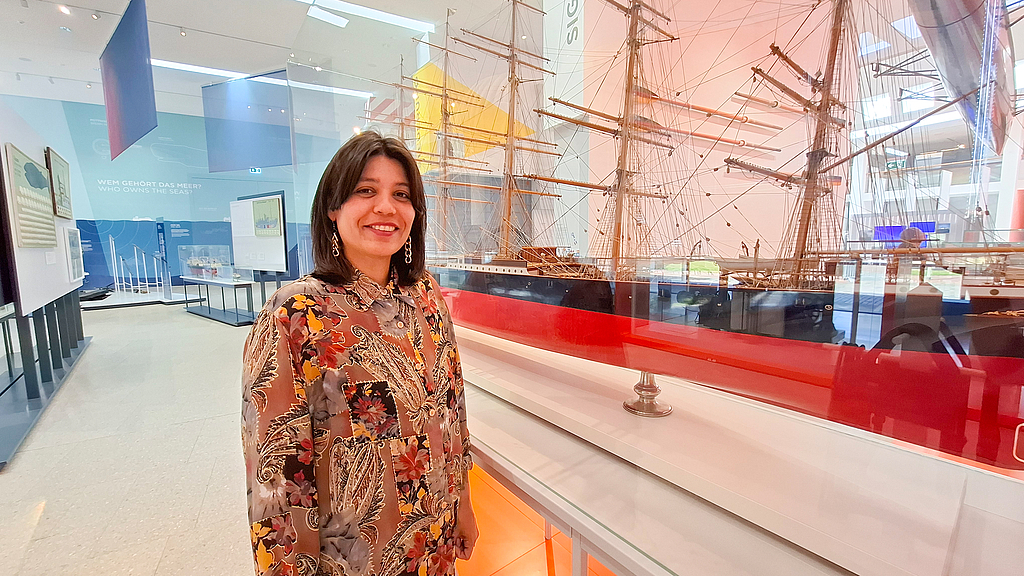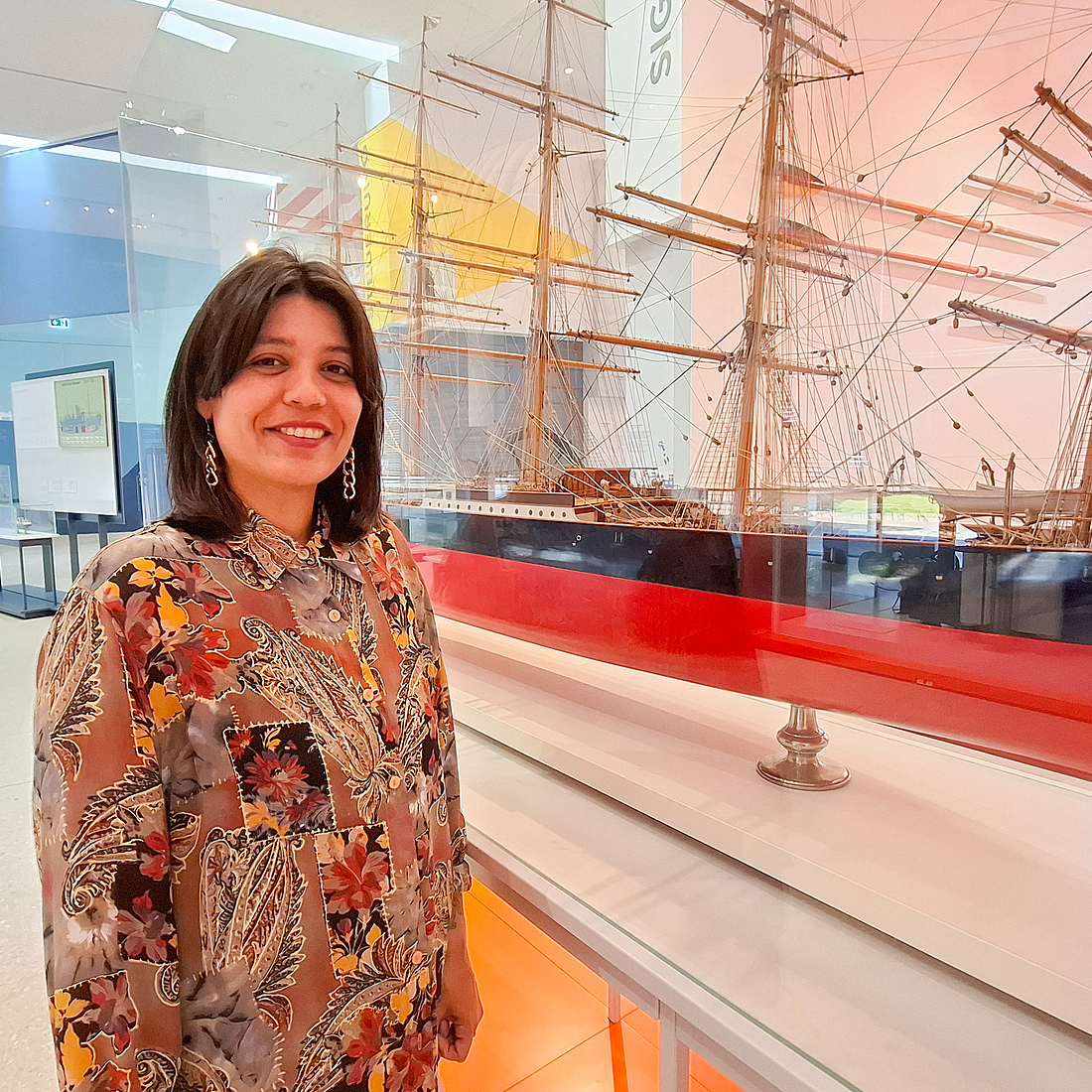Melanie Garland: Inclusive approaches to maritime heritage
Which research institute/university are you from, and how long will you be staying at the German Maritime Museum?
Melanie Garland: I’m an independent scholar working with different institutions and cultural spaces between Berlin, Rome, and Valparaíso. I completed my PhD at the Institute of European Ethnology at Humboldt Universität zu Berlin, where I am now a lecturer and guest researcher. I’ll be staying at the DSM from August to November.
Could you please explain your research background?
I am an interdisciplinary artist, curator, and researcher, focusing on urban and water spaces, postmigration, and cultural heritage. My work often takes the form of site-specific installations, soundscape compositions, and public or collaborative interventions. I hold a degree in Visual Arts, a Master’s in Restoration & Conservation of Cultural Heritage, and training as a museum collection manager. I recently completed my PhD in anthropology and reflexive European ethnology.
My research brings together postmigration and postcolonial studies, feminist geography, and decolonial practices with artistic-ethnographic methods. I am especially interested in the intersections of art and anthropology—working with objects, sound, and curatorial processes rooted in feminist ethics of care. Much of my practice explores collaborative exhibitions and public interventions, seeking ways in which multisensory approaches can move beyond the violence embedded in traditional ethnographic displays.
Why did you decide to do a research stay at the German Maritime Museum, and what will you be researching?
During my PhD, I became interested in the sonic dimensions of oceans and seas—approached through hydrofeminism and postcolonial ocean studies. These ideas unfolded in my curatorial practice and culminated in a multimodal exhibition as part of my PhD defense.
This led me to the DSM, where I can bring together my interests in museums, curating, and postcolonial ocean studies. My project reinterprets the Schiffsmodelle collection, tracing how maritime histories are intertwined with colonialism, commerce, and ecological change. The 19th-century Pamir and Preussen ship models serve as my starting points, opening broader narratives such as the exploitation of saltpeter in Chile and its lasting global traces—from the Chilean Altiplano to Hamburg’s Chilehaus. These histories also resonate with the current lithium extractivism in the Atacama Desert of northern Chile.
I see the Schiffsmodelle collection as a space for fluid and relational stories, where sailing routes transform oceans from barriers into connective corridors. My aim is to imagine more inclusive approaches to maritime heritage. Part of this involves collective listening sessions with ocean soundscapes, together with archival and ethnographic research, to bring forward untold histories of saltpeter extraction in South America.
Which exhibit is particularly exciting for you?
The Preussen ship model, one of my main research objects, is currently on display. It has become a perfect starting point—I spend time with it almost every day, observing how visitors engage with it and how it relates to other objects in the exhibition. This slow, daily presence feels like an ethnographic practice in itself, attentive to the encounters between visitors, objects, and the museum space.
More information about Melanie Garland: here.
Melanie Garland is looking for people to talk to and interview for her research. Anyone who has visited the Schiffswelten exhibition and would like to share their impressions is welcome to contact her.: M.Garland@dsm.museum

Credit: DSM / Annica Müllenberg

